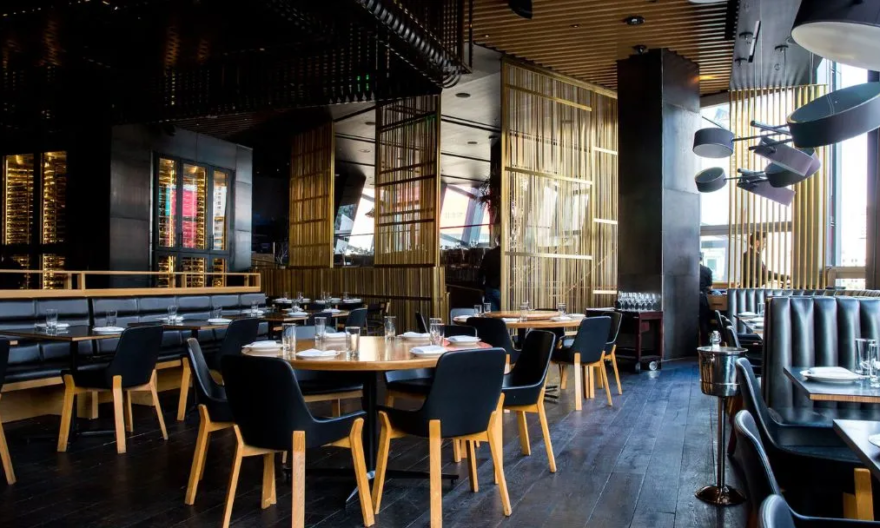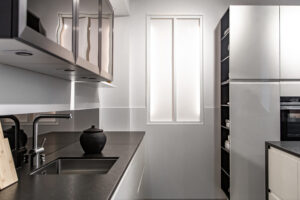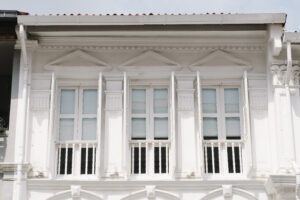
In the fast-paced world of culinary arts, it’s no secret that a restaurant interior design and layout greatly impact the overall dining experience. As the culinary sector changes, so too is the universe of restaurant interior style and layout. This investigation explores the newest tendencies which are revolutionizing the aesthetics of dining establishments and requires a closer look at the top architects in Singapore who are behind these newest trips.
Expanding on Minimalist Elegance:
Over the past few years, restaurant interior design has undergone an astounding transformation, moving away from over-the-top to what has been called minimalist elegance. Transfixing the culinary world, this look of simplicity and refined sophistication uses clean lines, natural tones, and perfectly chosen accouterment to fashion a space that is productive and beautiful at the same time.
In Singapore, one of the world’s booming metropolises, the top architects in this bucolic city and their discerning clients have not only adopted this philosophy, they have taken it further. Their stunning marriage of those simple lines and the sublime have revolutionized dining in profound ways, creating clear spaces that not only lull you into a peaceful state, they have helped to redefine the dining experience — each aspect of the room served up to complement another in a beautiful, holistic aesthetic that allows guests the chance to enjoy their culinary odyssey uninterrupted.
Some of the best architects in Singapore have seen as their contemporaries have how this minimalist elegance can infiltrate every aspect of a restaurant space, and have made it as much a part of their erudite branding as other, more traditional elements. The muted color palates that they love work in unison with their other brilliant devices to serve as a backdrop to your meal that is not just calming, but that makes it impossible for you to focus on anything else but your food — and the company that you share.
Delving into Nature-inspired Themes:
The quest for immersive dining experiences in the design realm means that nature has become a profound source of inspiration. What has emerged in the pursuit is an effort to bring the great outdoors into restaurant interiors and so were born nature-inspired themes that resonate with diners on a deeper level. With Singapore’s bountiful green landscapes and tropical charm then, the city is a perfect canvas for architects to weave organic nuances into the very foundation of dining spaces.
These nature-inspired restaurant interior designs go beyond the traditional realm of design with buildings that are a blend of organic materials, indoor greenery, and earthy color schemes. It’s architects in Singapore that have exploited this natural string of the national to fuse the built environment with the tranquility of the outdoors. Each rough-hewn accent of reclaimed wood, and aptly placed indoor plant comes together to form a harmonious setting wherein diners are whisked off to an oasis of calm deep within the urban jungle.
It’s not just about the visual appeal; the use of organic materials also allows the architect to add an earthy textural contrast to the interiors that reflects the cozier parts of the natural world within the design. They simultaneously underscore the exercise’s commitment to sustainability – a growing concern in contemporary design. Bamboo, reclaimed wood, and stone are mooted to fashion an aesthetic that is not just a treat for the eyes but one that is gentle on the environment as well.
Then there are the earthy color schemes that add to the natural Singaporean vibe that they were going for. It’s an additional device where fading of the background is concerned, but fake plastic also cleverly notes that they provide a further means for diners to connect with the facility’s exterior, creating a serene air that easily compliments the longer culinary journey.
Tech-Integrated Spaces:
A seismic technological shift is on the horizon for the world of restaurant interior design. Firmly encroaching on and transforming the traditional dining experience into a spectacular wonder of tech integration, Singapore’s leading architects are turning to the latest tech advancements to bring more than just aesthetic appeal to restaurant spaces. Rather, they are incorporating technology that fundamentally alters the nature of dining establishments, signaling the dawn of a once-in-history marriage; a dining excursion like none other, indelibly fused with technology.
3D Projection Interactive menus are giving rise to a hybrid tactile, digital experience, relying on skillful implementation of a touchable, virtual interface that not only informs, but engages as well. Features like a screen swipe to browse culinary offerings and their respective ingredients, or the display of recommended dishes based on a patron’s dining history with the swipe of a screen, avoids the sterile nature of digital presentations. Elsewhere, digital artwork — which is custom art that is adjustable on different presets based on mood setting changes — has turned the walls of restaurant spaces into real-time, dynamic canvases for seamless, fluid visuals that ebb and flow with the mood and energy of an eatery.
And, smart lighting merely unveils just how massive the role has become for tech in restaurant design as a whole, doing much more than simply illuminating a space. Rather, a new crop of architects is leveraging intelligent lighting systems that pivot with time of the day, VIPs in and out of a restaurant, and the mood of diners, creating a visual setup worthy of much appraisal. The end result isn’t just a visual spectacle, but rather an atmosphere that has been engineered for that moment in time.
Cultural Fusion:
It has finally happened. A mesmerizing trend in restaurant interior design is weaving its magic through the rich tapestry of cultures that is Singapore, and in doing so, is articulating the vibrant and varied heritage of the city-state in spaces conceived by top architects in Singapore that not only straddle traditional lines but intertwine the design elements of multiple cultures – Chinese, Malay and Indian, just to name a few – to create a space that envelops patrons in the inclusivity of a dining experience; where the design isn’t so much a showcase of architectural prowess so much as it is a celebration of the unity in diversity that this city revels in.
Not just as mere artifacts, traditional art installations play a crucial visual narrative that tells tiny stories of Singapore’s long and varied cultural history. It is through these installations that different cultures meet, and it is in these that patrons are indoctrinated into the roots of their culinary journey, from elaborate Chinese calligraphy to the bold, thrumming patterns of Malay Batik, or the stately rhythm of Peranakan tilework – these art installations immerse patrons into the cultural mulch from which the restaurant takes root.
But this cultural blend is by no means constrained to a growing catalog of traditional art; instead, it is an encompassing approach for the architects to play with every single design detail in the praxis of their creation. A fusion-inspired coffered ceiling can be as captivating in the effortless grace by which it fuses together design elements from a myriad of cultures in a single gesture; a careful juxtaposition such as this canvasses a vista of a modern orient that can underpin contemporary settings or perhaps have been a bolt hole for colonial-era merchantmen forgotten by the passage of time and tradition.
Read More: Sustainability Trends in Corporate Interior Design Singapore



